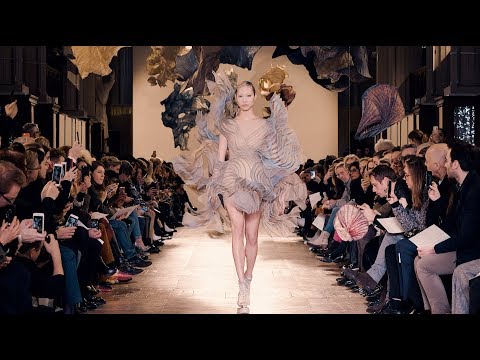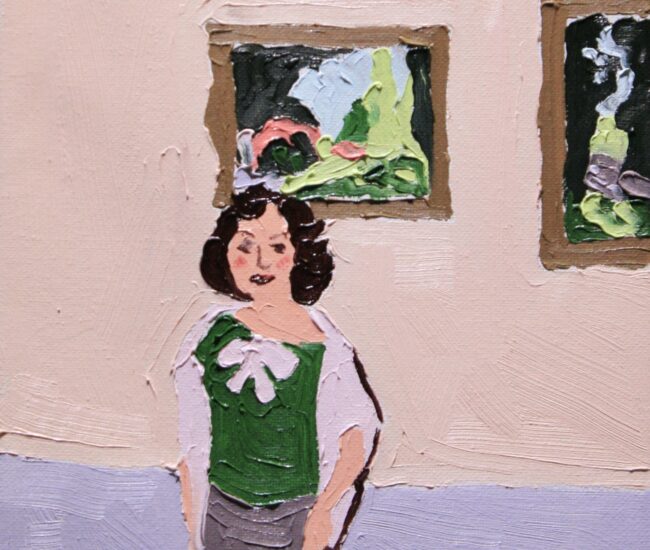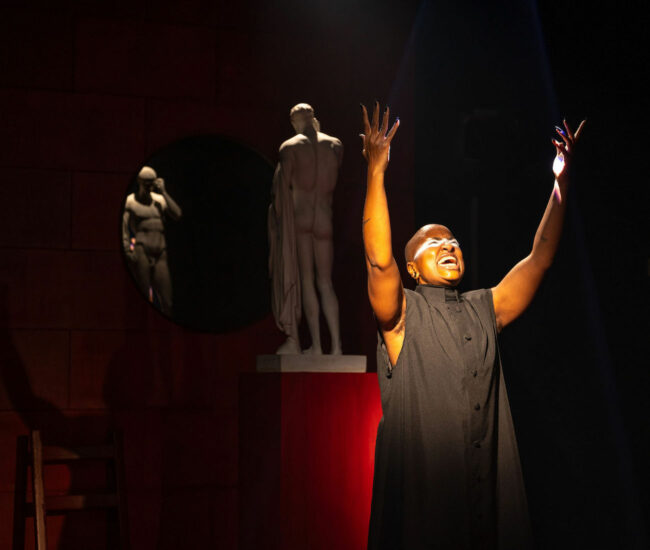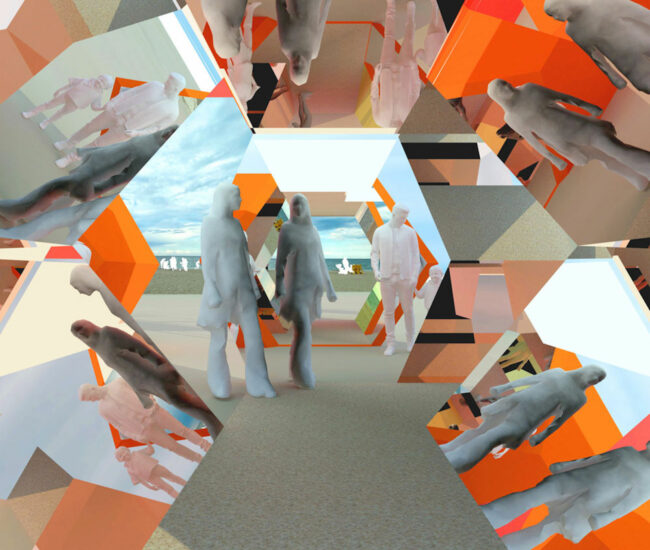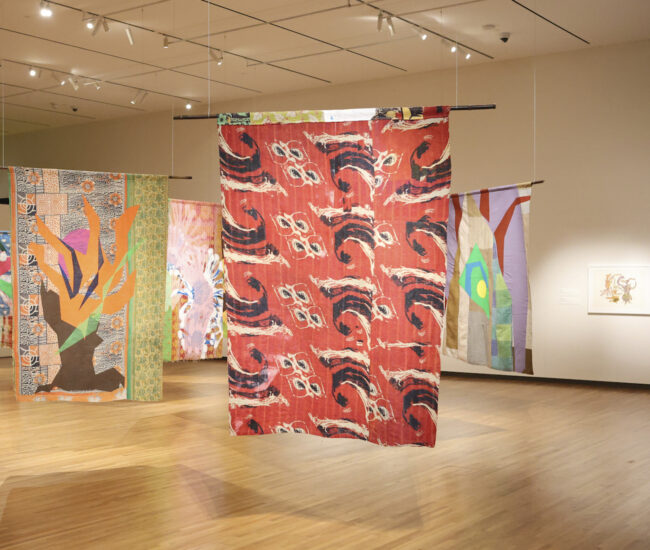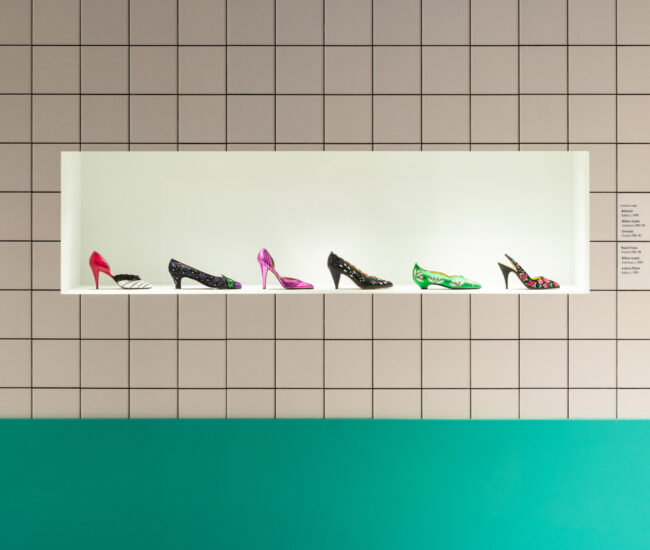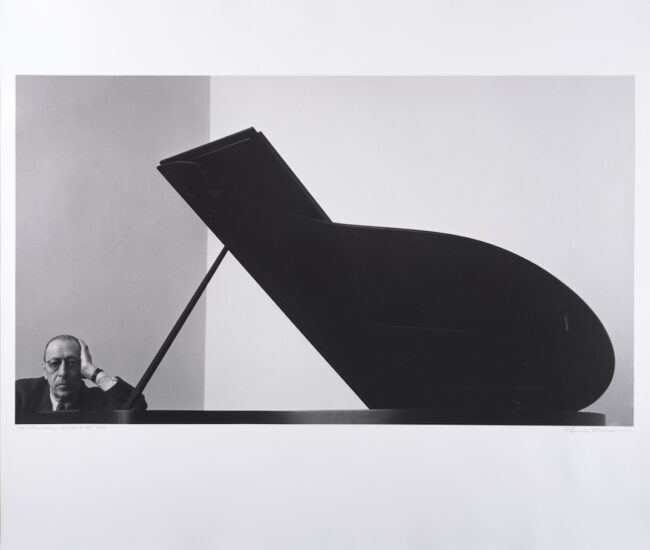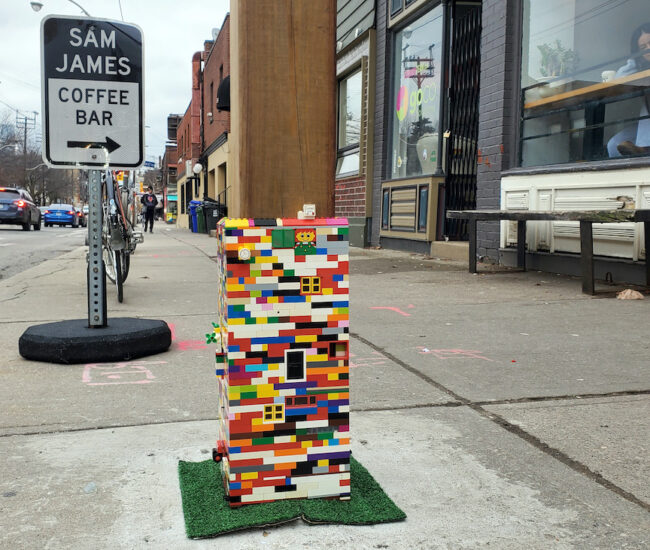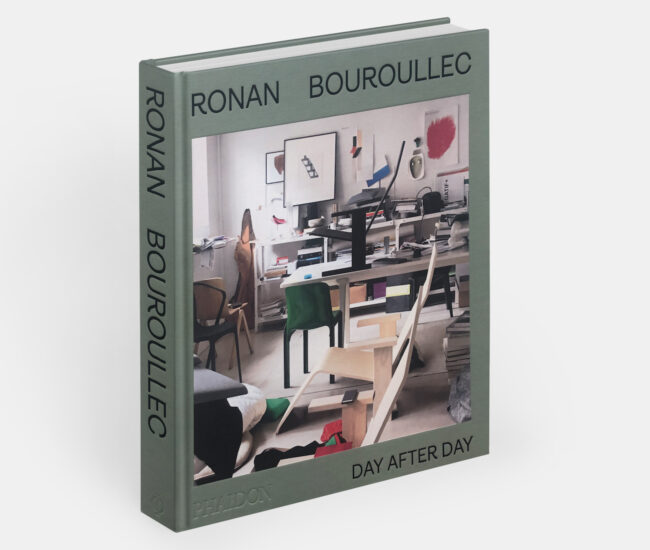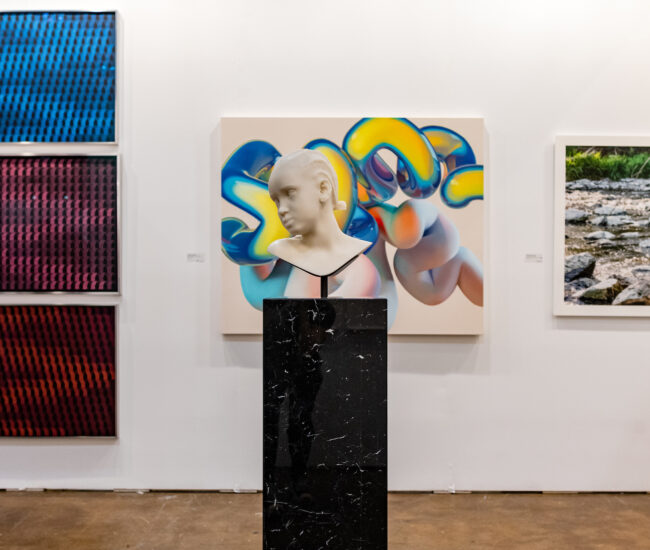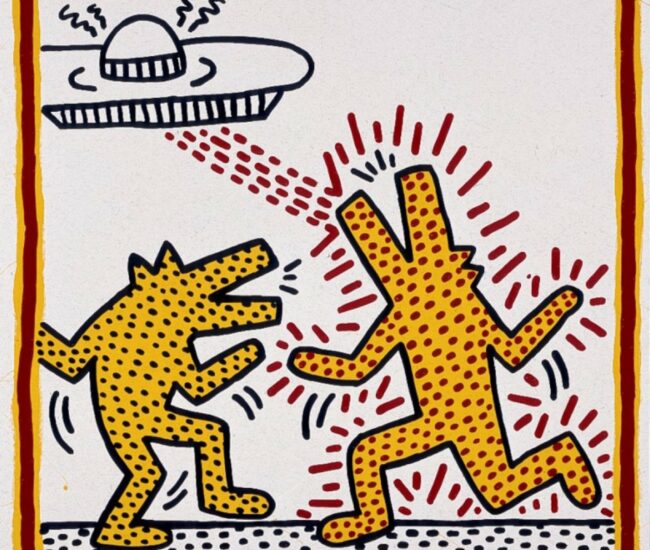Iris van Herpen’s Architectural Couture Coming to TO
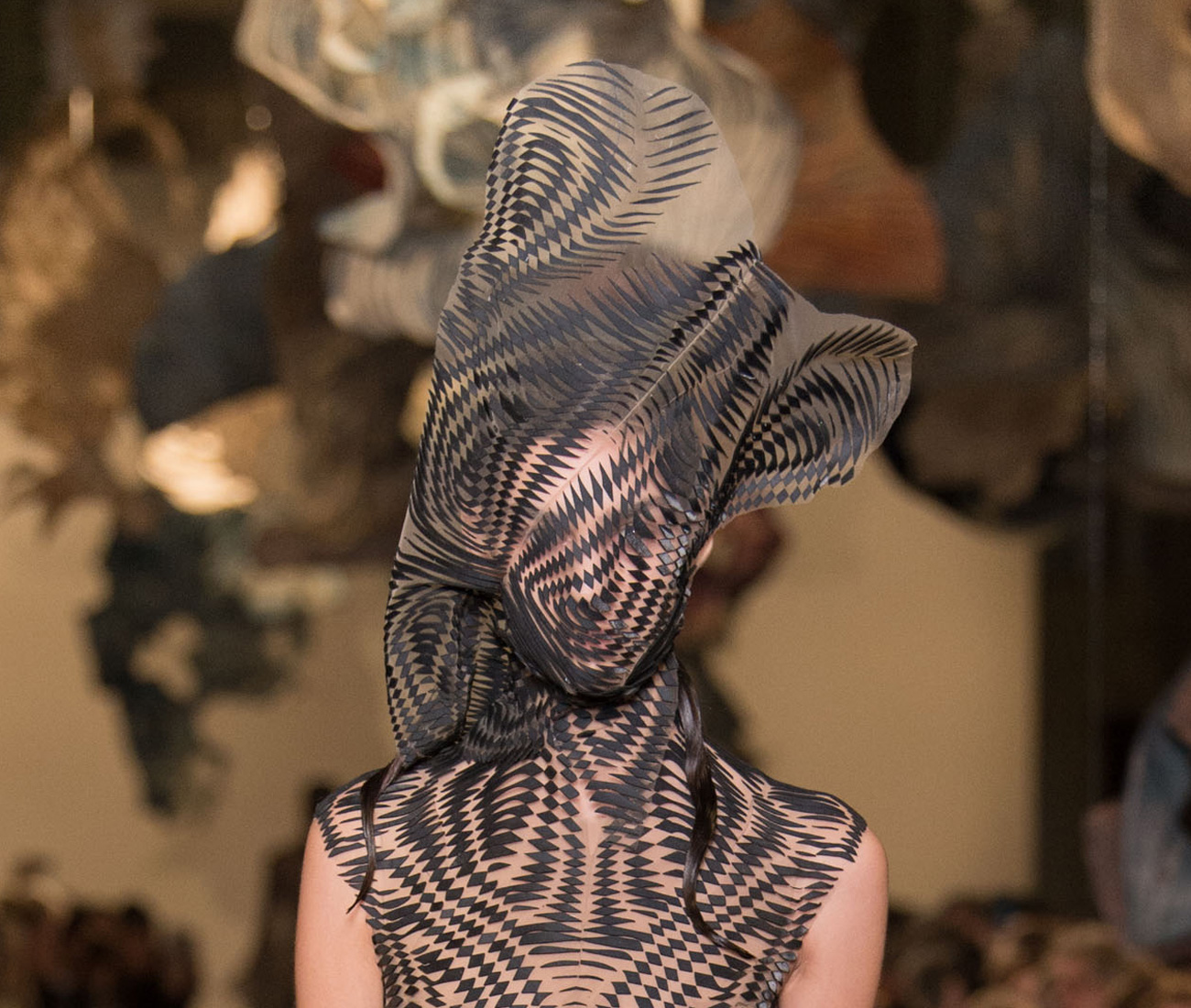
The boundary-pushing fashion designer creates nature-inspired couture using the latest technology, and a sewing needle
For an early collection, Iris van Herpen sculpted a rippling dress with the metal ribs from 700 children’s umbrellas. Chemical Crows (2008) is far from innocent. Encasing the body like otherworldly armour, it will be at home among other battle-worn artifacts at the ROM as part of the exhibition Iris van Herpen: Transforming Fashion, coming to Toronto this June.
Her nature inspired Spring-Summer 2018 collection, shown here, premiered in yet another museum in January. This time, the setting was the Galerie de Minéralogie et de Géologie in Paris — a destination for anyone looking to see “Martian meteorites, giant crystals and fantastic rocks and minerals” while surrounded by Corinthian arches. She couldn’t have picked a better venue. Inspired by aerial landscape photography (Edward Burtynsky’s celebrated environmental shots come to mind), the “Game of Nature” collection makes organic forms appear simultaneously familiar and alien.

“I zoomed out,” she says, “to look at the earth’s skin, trying to find the forces behind forms.” And so, as the models move down the runway, her 21 silhouettes alternately sashay and quiver like unidentified flora and fauna. But achieving innovative material techniques to mimic natural shapes is at the heart of her practice. Foliage, developed in concert with the Delft University of Technology, sees leaf-like patterns, some as thin as 0.8mm, 3D-printed directly onto exceptionally soft tulle fabric (shown above). Although complex in process, the resulting look is organic, almost as if the model has grown a supple second skin.
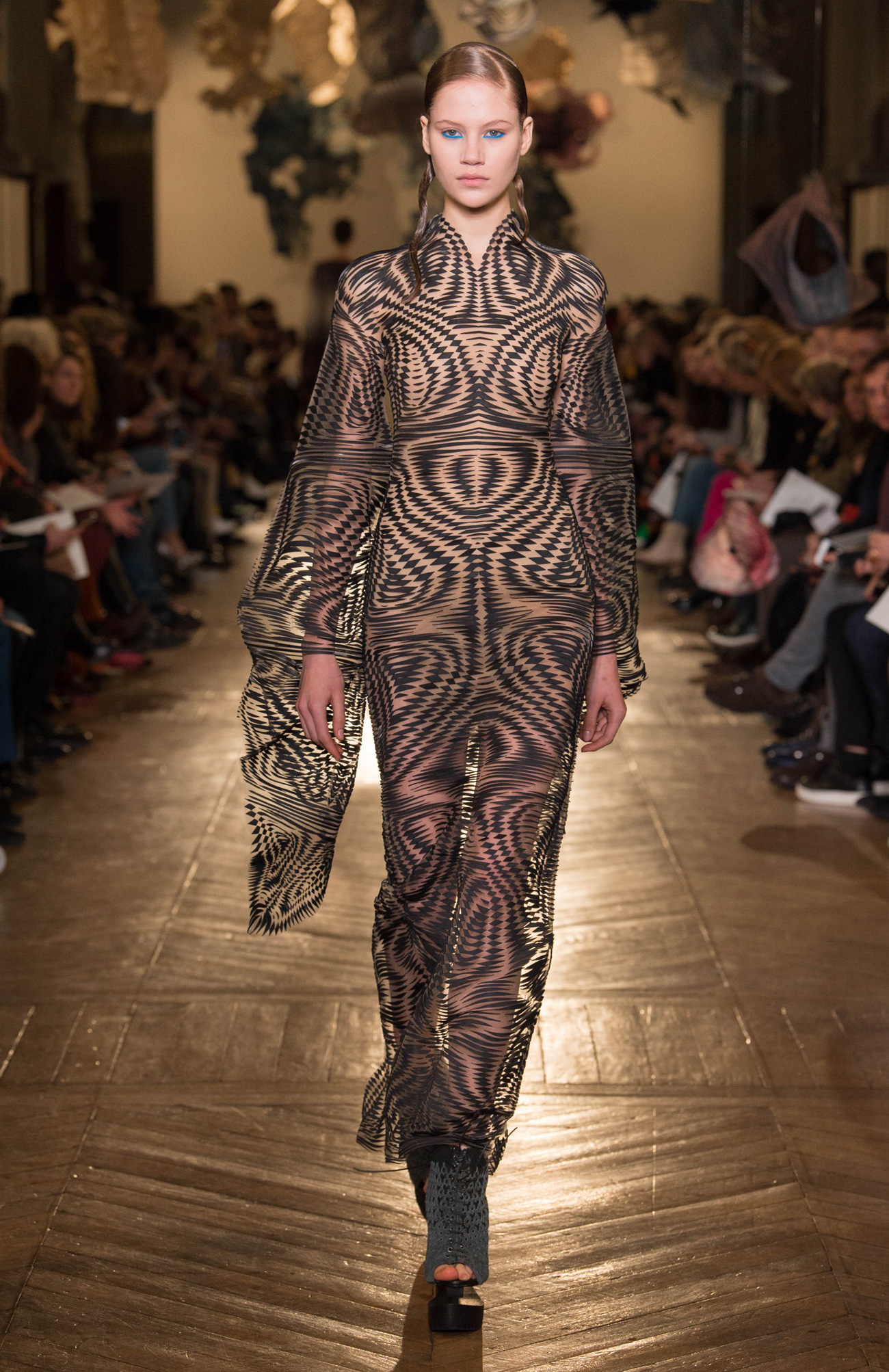
Many of van Herpen’s patterns appear to float above the surface of the skin, as on water. For example, the Data Dust dress, shown above, features parametric patterns that are computationally distorted, foam-lifted and then heat bonded onto invisible silk tulle. Sound technical? It is. One of her earliest successes was convincing a team of 3D printing specialists that they could fabricate a fully transparent dress. After much back-and-forth, van Herpen got her wish: a model that looked like she was wearing a splash of water.

The Dutch couturier’s high concepts have led her to collaborate with architects, scientists and artists from around the globe. She’s visited the Large Hadron Collider, a particle accelerator at CERN, for inspiration, and this spring, her longtime partner, Canadian architect Philip Beesley, will launch a concurrent installation at the ROM, acknowledging their work together. Both minds seem preoccupied with fusing the artificial and the organic: challenging themselves to create objects and environments that move, emote and breathe just like the bodies for which they were painstakingly made.

